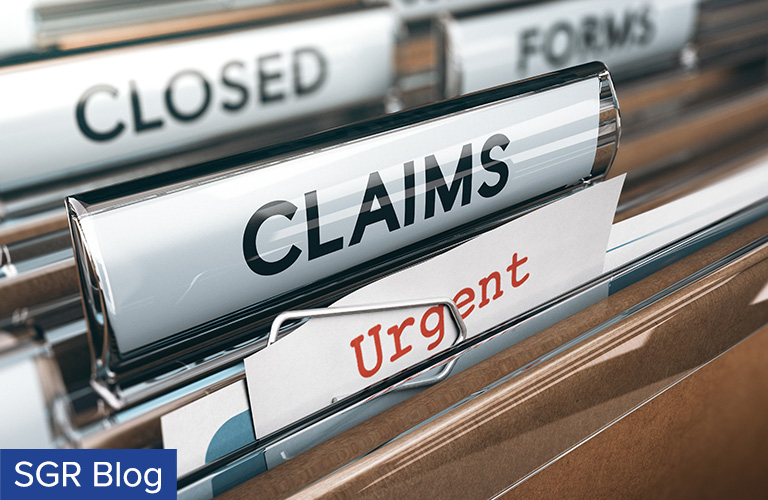
In a recent 8-1 decision, the United States Supreme Court resolved a circuit split in favor of debt collectors. Rotkiske v. Klemm[1] (Rotkiske III). Mr. Rotkiske brought suit on June 29, 2015 against Klemm & Associates (Klemm) for violation of the Fair Debt Collection Practices Act (FDCPA). Id. at *2. In September 2014, Mr. Rotkiske applied for a mortgage and learned that Klemm had an outstanding $1,500 default judgment against him. Id. In 2008, Klemm attempted service at Mr. Rotkiske’s previous address and learned that Mr. Rotkiske no longer lived there. Id. Klemm dropped the suit for failure to serve Mr. Rotkiske. Id. In 2009, Klemm again attempted service at Mr. Rotkiske previous address, but this time went forward with the case. Id. Mr. Rotkiske, having not received notice, did not appear in the case and default judgment was entered. Id. Mr. Rotkiske brought this action six years later, but only six months after learning about the judgment. Id. at *3. Mr. Rotkiske asserted that he was injured because Klemm sent notice of the lawsuit to an address knowing that Mr. Rotkiske no longer resided there. Id.
The Eastern District of Pennsylvania dismissed Mr. Rotkiske’s claim because the statute of limitations passed. Rotkiske v. Klemm[2] (Rotkiske I). The Third Circuit affirmed the district court’s decision, creating a circuit split between the Third and the Fourth and Ninth Circuits. Rotkiske v. Klemm[3] (Rotkiske II). The statute in question reads: “an action to enforce any liability created by the subchapter may be brought in any appropriate United States district court…within one year from the date on which the violation occurs.” 15 U.S.C § 1692k(d). The Third Circuit found that Congress clearly intended for the statute of limitations to run from the occurrence of the violation, not the discovery of the violation. Rotkiske II, 890 at 425. It reasoned that when Congress wants a statute of limitations to run from the discovery of a violation, Congress uses phrases like “the plaintiff acquired actual knowledge of the existence of such cause of action.” Id. However, when the statute of limitations runs from the occurrence of the violation, Congress uses language like “date on which the violation occurs.” Id. The FDCPA contains occurrence language; therefore, the court reasoned that the statute of limitations ran from when the violation occurred. Id. See Contra Lembach v. Bierman[4]; Magnum v. Action Collection Serv., Inc.[5] (holding that the statute of limitations begins running when the plaintiff discovers the violation.). The Third Circuit ultimately split from the Fourth and Ninth Circuits and decided that the 2015 case was untimely because the period of limitations expired in 2010.
The Supreme Court heard the case and affirmed the Third Circuit, overturning the Fourth and Ninth Circuits’ interpretation of the statute. Rotkiske III, 589 U.S. at *1. Justice Thomas, writing for all of the justices, held that the FDCPA’s plain language dictates that the period of limitations begins when the defendant violates the statute, not when the plaintiff discovers the violation. Id. at *5. The opinion then tackles the Ninth Circuit’s contention that “limitations periods in federal litigation generally begin to run when plaintiffs know or have reason to know of their injury.” Id. The Supreme Court found that the default rule in construing statutes of limitations is not at the discovery of the violation, but when the cause of action accrues because “Congress legislates against the ‘standard rule that the limitations period commences when the plaintiff has a complete and present cause of action.’” Rotkiske III, 589 U.S. at *4. The Court then reasoned that when Congress intends for the statute of limitations to begin at discovery of the violation, it does so unequivocally. Id. at *6. Here, the statute clearly states that the statute of limitations begins at the date of the violation, 2009; not when Rotkiske discovered the violation in 2014. Id. at *4. The Supreme Court did not decide whether, under equitable tolling principles, the discovery rule applies to fraud specific cases. The two concurring opinions discuss this issue, but the Plaintiff failed to properly preserve the issue below.
So what does all of this mean?
Debtors, if a creditor violates the FDCPA you must bring the lawsuit within one year of when the violation occurs. Regularly check your credit reports and if anything stands out to you, immediately call a lawyer to begin your lawsuit. Similarly, this law applies to you if a creditor is targeting or harassing you. If that is the case, then you should also immediately call your lawyer.
Creditors, if there is a possibility that the statute of limitations has passed, assert it as a defense. Unless Congress explicitly wrote that the statute of limitations begins when the plaintiff discovered or reasonably should have discovered the violation, the courts are required to find that the period of limitations commenced when the violation occurred.
All plaintiffs should be wary of all federal statutes of limitation. This case may have farther reaching implications outside of the FDCPA. The opinion spends the majority of its time discussing statutes of limitation, generally. The default rule is that the statute of limitations begins running when violation occurs, not when a violation is discovered. This means that you may have less time than you think to bring a case. As soon as you believe that you have a federal claim, call your lawyer and file your claim.
[1] 589 U.S. ___, No. 18–328, 2019 WL 6703563 (Dec. 10, 2019)
[2] No. 15–3638, 2016 WL 1021140, at *3 (E.D. Pa. Mar. 15, 2016)
[3] 890 F.3d 422, 424 (3rd Cir. 2018)
[4] 528 F. Appx. 297 (4th Cir. 2013)
[5] 575 F.3d 935 (9th Cir. 2009)
For more information on FDCPA claims, contact your Litigation Counsel at Smith, Gambrell & Russell.

